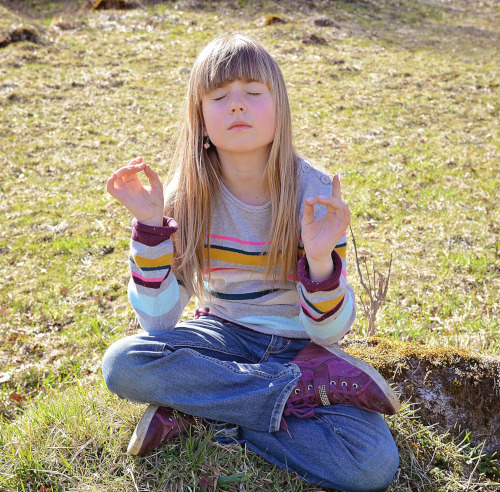When Should We Teach Our Children Mindfulness?
In an age when children are put under pressure it’s a good idea to give them a space away from it all, where they can feel calm. Meditation can be a great and calm/contemplative space for them to enjoy. This is a great habit to get into at an early age.
Why should children meditate?
“Mindfulness is a refined process of attention that allows children to see the world through a lens of attention, balance and compassion.
“When children learn to look at the world with attention, balance and compassion they soon learn to be in the world with attention, balance and compassion.”
(Susan Kaiser Greenland – leader and teacher in mindfulness to children, teens, parents and professionals and author of ‘The Mindful Child’.)
It can help bring about immediate behavioural changes. It can also help them to make difficult life decisions and give them a sense of connection with the world around them.
In an educational environment it helps children be more thoughtful and sharper. They will be kinder human beings.
Potential Benefits
Mental focus
Stress relief
Improved decision making skills
More self esteem
Develop maths skills
Deepen social skills
Discover life balance
Emotional control
Better sleep
Restlessness relief
Research on children with ADHD (attention-deficit/hyperactivity disorder)
According to work done at the National Therapies Research Unit, based at the Royal Hospital for Women in Australia, a number of benefits were found when children were treated with with Sahaya Yoga Meditation for six weeks. These benefits were;
Reduced hyperactivity
Reduced impulsiveness and inattention
Improved parent-child relationships
Enhanced self-esteem
Reduced use of medication in 50 percent of children
Research at UCLA
Greg Flaxman and Lisa Flook’s work showed that mindful meditation can strengthen parent-child relationships. There was mutually beneficial results for many family types.
Parents who used mindfulness with autistic children reported that their children were happier and listened better after mindfulness training.
Research into academic attainment
A study published in ‘Developmental Psychology’ found that 4th and 5th grade students who got into a regular meditation routine got 15% better marks in their maths tests.
Also the children on the meditation program showed a 24% better social behaviours, were 24% less aggressive and perceived themselves 20% more pro social.
Thus it would seem from the research that spending part of your day involved in mindful meditation, doesn’t take away from academic time, but actually increases academic attainment.
What age should children start meditating?
“If every 8 year-old in the world is taught meditation, we will eliminate violence from the world within one generation.” Dalai Lama
There is no right age to introduce meditation to your children. Some have started from age 3. There is no ‘normal child’. Some practitioners say that you should start with 1 minute per year of age of child
What is the best length of time to meditate?
Young children have short attention spans. It is good to be realistic about it. Keep the sessions short. A five year old isn’t going to be still for longer than a couple of minutes.
What techniques should be used with children?
It can be helpful to have a special place in your home to carry out their meditative practice. Candles and incense are not essential, but may help with the mood (depending on age). Perhaps also some calm music.
One way to introduce children younger than eight to meditation is through games and challenges. Start by focusing on the mindfulness rather than the meditaion. They can mindfully listen to a bell or gong for a couple of minutes.
You can get them comfortable with periods of quiet. Play with the idea of how long they can be quiet for. Perhaps, as they progress, they could start to reflect on how they are truly thinking and feeling.
Deep breathing techniques are good. It costs nothing and your breath comes with you wherever you go. The breath can be followed throughout the body. Following the breath can bring physical calming when nothing else can. It may be fun to try out a couple of techniques.
1. You can use the alternative nostril technique. Hold one nostril closed and breath in and out through the other nostril. Then hold the other nostril and breath in and out. Keep switching between nostrils. Keep going for about 5 minutes, or for the length of time appropriate to your child.
2. Another option is belly breathing. Breath in deeply through the nose and suck the belly in. Then breath out slowly through the nose. Each inhale and exhale should be held for 3-4 counts. With practice the counts can get longer.
Make the meditation enjoyable
It’s not realistic to expect your child to sit down with a serious face and focus like an adult. Help them focus by making it an enjoyable experience and not just another routine. Vary your techniques. You could add in some visualisation. Let them imagine themselves on a calm sandy beach listening to the waves crashing in or in a special garden with birds flying around. Let yours and your children’s imagination run free. Maybe talk to them about their experiences after the session.
The great thing about meditation is that it leads to inner strength and happiness. A great skill for a successful life. It connects us to the root of true happiness, not fleeting ones.
